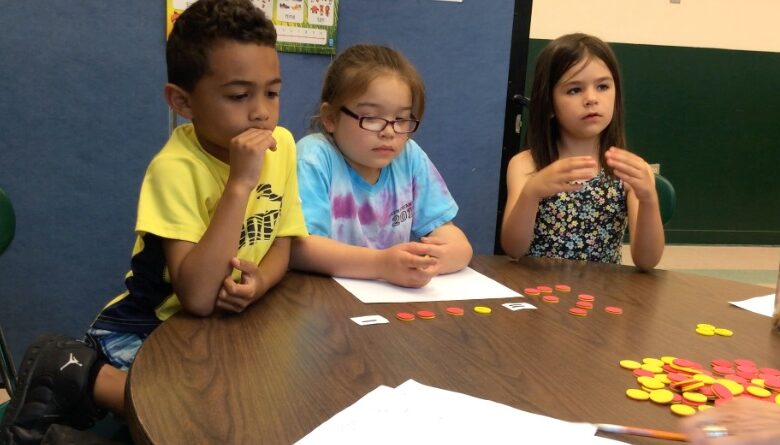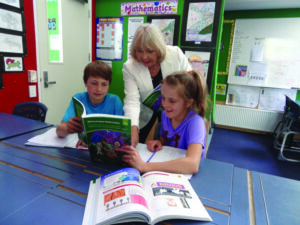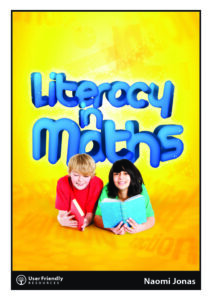Problem solving maths decline

All schools are well-aware of the national problem: Aotearoa New Zealand needs to improve student outcomes in mathematics. But how?
In March 2022, the Government unveiled a new five-year Literacy & Communication and Maths Strategy, which introduces a common practice model that the Ministry emphasises “does not mean creating one-size-sits all approaches, rather it is about creating greater national consistency”.
The strategy document outlines steps for maths progress under five focus areas:
- Clear expectations for teaching and learning guide effective practice
- Capability supports along the career pathway develop effective Kaiako and teachers who can meet the needs of diverse groups of learners
- Educationally powerful connections support and enhance learning
- A system of learning supports responds to the needs of every learner
- System-wide evaluation supports a system that learns
Under each of these, sit five practical undertakings. For example, under point 1, there is:
1.1 Refresh maths learning described in the NZC
1.2 Replace the Learning Progression Framework with a progression for schooling that shows the sequence of learning for numeracy
1.3 Develop resources and guidance to help kaiako understand children’s progress in numeracy in the early years, as part of a common practice model
1.4 Develop guidance on how to teach maths in schooling, as part of a common practice model
1.5 Safeguard maths teaching and learning time
Practical detail on Focus Areas 2 – 5 can be viewed in the maths section of the strategy document, from page 20 onwards.
This new strategy follows the colossal 56-page independent report on the English-language mathematics and statistics curriculum published by the Royal Society Te Apārangi late last year. Fourteen key recommendations for systemic change were put to the Ministry of Education in the report, some of which Associate Education Minister Jan Tinetti said at the time had already begun, such as “phasing out streaming, providing quality professional learning development for teachers and reducing inequities in education”.
This article is in our Term 2 issue, online here: https://issuu.com/multimediaau/docs/snnz57-term_2-2022
Massey University Distinguished Professor Gaven Martin chaired the expert panel that oversaw the Society’s original independent report and stressed at the time that teachers should not be blamed for the maths decline: “They have met all the requirements placed on them to be fully qualified and cannot be blamed for how the system works.” His response to March’s strategy announcement was positive, with a ‘time will tell’ footnote.
He told School News: “I’d first say that the Government’s strategy is still high level, and the devil will be in the details. Nevertheless, I would say that what has been proposed aligns very closely with the Royal Society Te Apārangi report’s recommendations, and we are very happy with that.
“As for implementation, it is true that the implementation of some of the recommendations had begun earlier – we had discussed initial recommendations with Ministry of Education a while before the report was released of course. But this is a large and complex process and ‘fruition’ is still some ways off – as is to be expected. However, this seems to be the right path, and structures and support will be needed to ensure we stay on this path.”
Professor Martin reflected on the failings that have led to the release of the new five-year strategy. He said: “One of the problems of the numeracy project two decades ago was that no oversight of its long-term implementation was provided, and it quickly went off the rails. And from there, things just kept getting worse.
“As a personal view (but also clear in our report) is that we would like to see a bit more language being used about supporting students to get a good handle on the basics as early as possible, just to make it very clear to everyone.”
Industry Perspectives on School Maths Programmes
Caxton Educational author, Maryanne Tipler pointed out a few issues that may be contributing to the maths decline: “New Zealand has a primary school teaching population where many are not comfortable with teaching mathematics. Many primary teachers who received their professional development in mathematics through the Numeracy Project only teach numeracy, so there is a diminishing achievement in the other strands.

“Primary school teachers need expanded guidance, ongoing professional development, and access to good, recommended resources to help them to produce programs of mathematics that cater for the needs of their students.
“Online maths games and resources can be a valuable tool in gaining the attention of students who would otherwise not engage with conventional maths resources but should be used as a component, not a replacement, of a program of mathematics.”
Furthermore: “Although the mathematics curriculum itself is sound, the fleshing out of the objectives and support to teach them is not coherent or easy to access. Teachers depend on a range of resources to develop their program and do not always select those most suitable for their class.
“Many teachers are influenced by, and rely on, commercial online sites and paper resources, such as fill-in-the-gap worksheets, that are not written for the NZ curriculum. Using these types of material does not facilitate understanding of mathematical concepts or encourage students to record their mathematical thinking and explain their reasoning, skills which are required at higher levels.
She added: “Recent research shows that good print-based materials improve overall comprehension. To improve mathematics standards, schools should choose resources written specifically for the New Zealand curriculum. This would encourage the recording of mathematical thinking, provide opportunity and practice at mathematical problem solving, the discussion of mathematical concepts and encourage understanding of mathematics alongside a sound knowledge of basic facts.”
Janine Trembath, representative from ITECNZ, Symphony Math said: “When considering math programs, look for options that go beyond gamification to actively developing and demonstrating math concepts. Use program work as a basis for deeper discussion in class, establishing sound foundations and a joy in math discovery.”
She explained: “Good math programs ask students to model their answers to demonstrate conceptual understanding. Traditional models such as number lines, bars/blocks, and counters of equal size, provide a clear, consistent way of modelling math. Math is uniform. Dienes Blocks, for example, have blocks of equal size representing one unit, helping students to form a deep understanding of quantity and our base 10 counting system.
“Recall of basic facts is also prerequisite to success with higher maths reasoning. Rote learning tables and families of facts builds math fluency as well as introducing early math concepts. Times tables are the math equivalent of sight words, and mastery builds confidence.”
Students need a strong foundation in number: “Fractions are frequently cited as being where the wheels fell off, which is often an indicator that earlier skills were not deeply understood. I have observed that students of all ages commonly trip up on a specific question where the equals sign is moved in the equation.
“I believe two main things are happening here: first, some students are not taking time to think through what the math equation is really saying before answering, which is an important skill to encourage because changing one factor changes the answer; second, many students do not know what the equals sign really means. Therefore, they don’t understand that everything on the left of the equals sign has the same total value as everything on its right. This is a vital math concept and of course important to finding missing integers. The equal sign does not mean ‘the answer is’.
Madelize Bekker, Managing Director at EduMaxi believes that “we need to carefully consider what these declining math outcomes are and how they are assessed”.
She said: “There should be a system and process in place which allows for adjusting outcomes and assessment methods more frequently than we are currently doing. Adjustment should not primarlily be for test validity and reliability but also for context relevance. For example, ten years ago (maybe even five years ago), being able to accurately answer a question about how much change you should receive when paying for something would have been very relevant and an important outcome to achieve.

“Today, many junior primary students would not be able to relate to paying with cash in a world of mobile payments where there is no such thing as ‘receiving change after a payment’.
“Since maths can be directly linked to financial success and quality of life, it is crucial to ensure students are capable and literate. Therefore, the kind of programs that are relevant to modern life, flexible, and agile when it comes to accommodating change are the ones that may help turn things around (if we ensure we also adjust assessment).”
Madelize suggested that programmes can help develop problem-solving skills and confidence in mathematical concepts while keeping students of all abilities and needs engaged, in a few different ways: “Encouraging daily routines to establish and consolidate basic facts; presenting open-ended questions to encourage discussion and debate; making maths concepts relevant to daily life (this could be tricky because of different socio-economic circumstances of students but this is where I think AI and adaptive instruction will massively help); setting varied goals so that the goals are always smart and realistic for each student; and finally, by making use of good illustrations and design to help students visualise problems and solutions.









